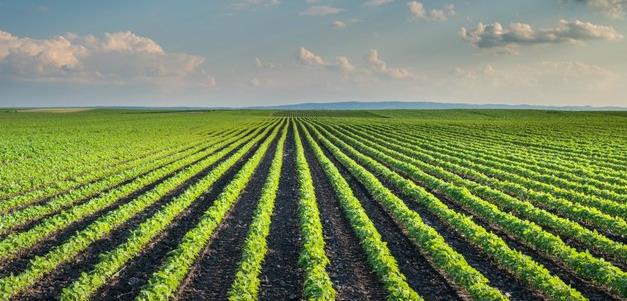Farmers will rely on scientific innovations to feed the world in the future
by July 17, 2018 6:27 pm 1,058 views

Row crop fields in Arkansas’s Delta Region include miles and miles of polypipe, a pipe used to irrigate crops. Holes are punched in the pipe to allow water to spill out.
Sometimes those holes have a blowout or a coyote or other animals chew on the pipe causing it to lose pressure. Repairing one section of damaged pipe can cost as much as $100, but last year Arkansas State University student Nathan Bailey invented the Bailey Patch. The patch wraps around the damaged part of the pipe and a zipper mechanism allows the pipe to be sealed, AgWatch Network General Manager Terry Simmons told Talk Business & Politics. The Bailey Patch costs about $30 per repair.
Northeast Arkansas is the center of row crop agriculture production in the state, and it should be a center of farming innovations in the future, he said during a seminar Tuesday (July 17) at the Jonesboro Regional Chamber of Commerce. The world will have 9 billion people by 2050, and farmers will have to find more efficient ways to grow food. Two groups, farmers and innovators will have to communicate better to create better technologies to help the agriculture community to move forward, he said.
“Farmers don’t know anything about software and people who develop software don’t know anything about farming,” he said.
Data analysis and use will be a key to developing better technologies, he said. A lot of farmers harvest not only crops with their combines and tractors, they also harvest data, he said. Many don’t know how to use it and there isn’t a computer application that can help them with that process. Better data collection and usage will maximize field yields.
Georgia farmer Randy Dowdy has set world yield records in corn and soybean production in recent years, and understanding how his fields grow crops is the key, Simmons said. Knowing the varying soil types, where to put more or less fertilizer, how moisture collects in the subsoil in different parts of a single field, has helped Dowdy become one of the top farmers in the country.
“He knows every square foot of his fields,” Simmons said.
Data is one key, but scientific innovations will be critical as well, Simmons said. In the Midwest, crop fields have deep layers of organic material. In Arkansas, the organic soil layer is shallower, Simmons said. Farmers have to use more fertilizer and other chemicals to make up for the deficit. When these chemicals wash off a field it end up in the region’s waters ways and ultimately in the Gulf of Mexico. There is a “dead zone” in the Gulf where few living things exist due to the toxic, low oxygen waters created by the chemical runoff, he said.
Biological engineers are developing soils that have higher organic content to allow for less fertilizer use, he said. Another company is developing a “shell” for nitrogen pellets that prevents it from being washed away, and it allows the nitrogen to be dispersed into the field intermittently, he said.
Communication between innovators and farmers will be the key to future growth in the farming industry, Simmons said. Farmers are problem solvers, but aren’t always good at explaining what they need to make their jobs easier, he said. A scientist or a software developer might have ideas to improve a farmer’s job, but without better dialogue, those potential innovations will go unrealized.
“There’s no option. Some of our resources such as land and water are finite. We have to find more efficient ways to farm,” he said.
